- Home
- Robin Cook
Marker Page 4
Marker Read online
Page 4
Along with sharing office space, Laurie and Riva had become good friends. Riva’s boyfriend was as resistant to commitment as Jack, but for different reasons, so she and Laurie had a lot to talk about.
After momentarily debating whether or not to have coffee and deciding not to, for fear that it would give her a tremor, Laurie started off to find Marvin. Although she was going only one floor down, she headed toward the elevator. She was exhausted from lack of sleep, just as she knew she would be when she had been unable to fall back asleep that morning. But instead of feeling irritated with herself, she was content. She certainly wasn’t happy, because of her feelings for Jack, and she knew she was going to be lonely, yet she felt she’d done what she had to do, and in that way, she was satisfied.
When Laurie passed the forensic investigators’ office, she leaned in and asked if Janice had left. Bart Arnold, the chief investigator, told her she had but asked if he could help. Laurie said she’d talk to her some other time and continued on her way. She had only wanted to fill Janice in about the conversation she’d had with the McGillins. She thought Janice would be interested. The fact that the case had penetrated Janice’s usually thick emotional skin was what had intrigued Laurie in the first place.
Marvin was in the mortuary office, attending to his portion of the never-ending paperwork that engulfed the OCME. He had already changed into green scrubs in anticipation of getting down to work in the “pit,” the term everyone fondly used in referring to the main autopsy room. He glanced up when Laurie appeared in the doorway. He was an athletic-looking African-American with the most flawless skin Laurie had ever seen. Laurie had been instantly jealous the first time she met Marvin.
Laurie was sensitive about her complexion. Along with her blond coloring, she had a spattering of freckles over the bridge of her nose as well as a scattering of other imperfections that only she could see. Although Laurie had gotten brown hair with auburn highlights from her father, her almost transparent skin and blue-green eyes came from her mother.
“Are you ready to rock and roll?” Laurie asked playfully. She knew from experience that she’d feel better if she didn’t act tired.
“You’re on, sister!” Marvin responded.
Laurie handed over the folders. “I want to do McGillin first.”
“No problem,” Marvin said, consulting the ledger for the location of the body.
Laurie first went into the locker room to change into scrubs, then went over to the storage room to don a “moon suit.” “Moon suit” was the term used by the staff to describe the protective gear required while doing autopsies. They were fashioned of completely impervious material, with attached hoods and full-face masks. Air was brought into the suit through a HEPA filter by a self-contained fan, powered by a battery that had to be charged each night. The suits were not popular, since they made working more difficult, but everyone accepted the handicap for peace of mind, except Jack. She knew that when Jack was on call on weekends, he frequently dispensed with the moon suit on certain cases where he felt the risk of an infectious agent was low. In those circumstances, he reverted back to the traditional goggles and surgical facemask. The techs seemed content to keep his secret. If Calvin found out, there would be hell to pay.
After climbing into her gear, Laurie retraced her steps to the central corridor, then walked down to the door of the anteroom, where she washed and gloved. Thus prepared, she pushed into the autopsy room.
Even after working at the OCME for thirteen years, Laurie still savored the tingle of excitement she felt as she entered what she considered to be the center of action. It certainly wasn’t the visual experience, for in that regard, the tiled, windowless room with its blue-white fluorescent lighting was cheerless. The eight stainless-steel tables were dented and stained from countless postmortems. Over each hung an antiquated spring-loaded scale. Along the walls were exposed piping, dated X-ray view boxes, old-fashioned glass-fronted cabinets containing an array of grisly instruments, and chipped soapstone sinks. More than a half century ago, it had been a state-of-the-art facility and the pride of the OCME, but now it suffered from lack of funds for both modernization and appropriate upkeep. Yet the physical plant didn’t faze Laurie. The setting didn’t even register in her mind. Her response was based on knowing that she would see or learn something new every time she entered the room.
Of the eight tables, three were occupied. One supported the corpse of Sean McGillin, or so Laurie surmised, since Marvin was scurrying around it in his final preparations. The other two, closest to where Laurie was standing, contained bodies in the middle of their procedures. Directly in front of her lay a large, dark-skinned man. Four people attired in moon suits identical to Laurie’s were working over him. Although reflections off the curved plastic full-face masks made identification difficult, Laurie recognized Calvin Washington. His six-foot, seven-inch, two-hundred-fifty-pound frame was hard to conceal. The other one she thought was Harold Bingham because of his contrasting short, stocky stature. The last two had to be George Fontworth and the mortuary tech, Sal D’Ambrosio, but because they were about the same size, she couldn’t tell them apart.
Laurie stepped over to the foot of the table. Just in front of her was a drain emitting a rude sucking sound. Water continuously ran down the surface of the table beneath the corpse to carry away body fluids.
“Fontworth, where the hell did you learn to use a scalpel?” Bingham growled.
It was now obvious which one of the suited figures was George. He was on the patient’s right with his hands somewhere down in the deceased’s retroperitoneal space, apparently trying to trace the track of a bullet. Laurie couldn’t help but feel a stab of sympathy for George. Whenever Bingham came into the autopsy room, he liked to assume the professor role, but he invariably became impatient and annoyed. Even though Laurie knew she could always learn from him, she disliked the aggravation of working with him. It was too stressful.
Sensing that the atmosphere around table one was too charged to ask any questions, Laurie moved down toward table two. There she had no trouble recognizing Jack, Lou, and Vinnie. Immediately, she sensed the atmosphere was the opposite, with some semi-suppressed laughter dying away as she arrived. Laurie was not surprised. Jack was famous for his black humor. The corpse was that of a thin, almost emaciated, middle-aged female with brittle, bleach-blond hair. Laurie assumed it was Sara Cromwell. Of particular note was the handle of a kitchen knife protruding at an acute, cephalad angle from the upper, outer, anterior surface of her right thigh. Laurie wasn’t surprised to see the utensil still in place. In such cases, medical examiners preferred that such objects be left in situ.
“I hope you are showing reasonable respect for the dead,” Laurie gibed.
“Never a dull moment,” Lou responded.
“And I don’t know why I keep laughing at the same jokes,” Vinnie complained.
“Tell me, Doctor Montgomery!” Jack said in an exaggerated professorial tone. “In your professional opinion, would you guess this penetrating entry into the thigh was a mortal wound?”
Bending over slightly so she could better access the point of entry, Laurie looked more closely at the knife. It appeared to be a small kitchen paring knife, which she guessed had a blade about four inches long, which had penetrated to the haft lateral to the femur. More important, the entrance was inferior to the anterior iliac spine but in line with it.
“I’d have to say it was not fatal,” Laurie responded. “Its location suggests the femoral vessels surely would have been spared, so bleeding would have been minimal.”
“And Dr. Montgomery, what does the angle of entry of the weapon suggest?”
“I’d have to say it’s a rather unorthodox way for someone to stab their victim.”
“There you go, gentlemen,” Jack commented smugly. “We have confirmation of my assessment by the eminent Dr. Montgomery.”
“But there was blood all over the place,” Lou whined. “Where the hell did it come from? There are no other wounds.�
�
“Ah-ha!” Jack said switching to an exaggerated French accent, finger raised in the air. “I believe we shall see in a few moments. Monsieur Amendola, le couteau, s’il vous plaît!”
Despite the glare of the overhead fluorescent lights off Vinnie’s face mask, Laurie caught him rolling his eyes as he passed a scalpel into Jack’s waiting hand. He and Jack had a curious relationship. Although it was based on mutual respect, they pretended it was the opposite.
Leaving the three to their own devices, Laurie moved on. She felt a mild disappointment that Jack could be so offhand and flippant. She couldn’t help but think it wasn’t a particularly good sign, as if he didn’t care.
Laurie made an effort to put the problems with Jack out of her mind as she approached the next table. Stretched out on its slightly angled surface was the body of a well-muscled male in his mid-twenties, his head propped up on a wooden block. By reflex, she immediately began the external exam. The individual appeared healthy. His visible skin, although marble-white in death, was lesion-free.
His hair was thick and dark, and his eyes were closed as if in repose. The only visible anomalies were a sutured incision with a retained drain on his lower right leg, the capped-off end of an intravenous line running into his left arm, and an endotracheal tube protruding from his mouth, left over from the resuscitation attempt.
With Marvin still busy putting labels on specimen jars, Laurie checked the body’s accession number and name. Confident that she was dealing with Sean McGillin, she continued the external exam, inspecting the IV site carefully. It looked entirely normal, with no swelling or other evidence of extravasation of blood or IV fluid. She looked more closely at the sutured wound on the leg, the site of the operation on the fractured tibia and fibula. There was no swelling or discoloration there, either, suggesting that there was no infection. The drain was sutured in place with a single loose loop of black silk, and there was evidence of a minimal discharge of serous fluid. The leg itself looked like the other leg, without any outward signs of venous thrombosis or clotting.
“I didn’t see anything of note externally,” Marvin said when he returned with a handful of sterile syringes and specimen jars, some containing preservatives and some without. He placed them all on the edge of the table to have them immediately available.
“So far, I’d have to agree,” Laurie responded. There was a lot of give-and-take between the techs and the doctors, although it varied, depending on the personalities. Laurie always encouraged comments and suggestions, especially from Marvin. As far as she was concerned, the techs were a rich source of experience.
Marvin went over to the glass-fronted cabinets to get the required instruments. Despite the hum of her ventilation fan, Laurie could hear whistling. He was always cheerful, which was another thing she liked about him.
After checking for signs of intravenous drug use and not finding any, Laurie used a nasal speculum to look inside Sean’s nose. There was no suggestion of cocaine use. With a mysterious death, drugs had to be considered, despite what his parents had said to the contrary. Next, she opened the eyelids to examine the eyes. They appeared normal, with no hemorrhages on the sclera. Opening the mouth, she made sure the endotracheal tube was in the trachea and not the esophagus. Laurie had seen that on a few occasions with the predictable disastrous results.
With all his preparations complete, Marvin came back to the side of the table opposite Laurie and stood expectantly, waiting for the internal part of the autopsy to begin.
“All right! Let’s do it!” Laurie said, reaching out with her hand as Marvin handed her a scalpel.
Although Laurie had done thousands of postmortems, each time she started another, it gave her a tingle of excitement. Starting the actual autopsy was akin to opening a sacred book, the mysteries of which she was about to discover. With her index finger pressing down on the top of the scalpel, Laurie expertly made the usual Y-shaped incision, starting from the points of the shoulders, meeting mid-sternum, and then continuing down to the pubis. With Marvin’s help, she quickly reflected skin and muscle before removing the breastbone with bone cutters.
“Looks like a broken rib,” Marvin commented, pointing to a defect on the right side of the chest.
“No hemorrhage, so it was postmortem, probably from the resuscitation attempt. Some people go overboard with the chest compressions.”
“Ouch!” Marvin said sympathetically.
Expecting blood clots or other emboli, Laurie was eager to examine the great veins leading to the heart, the heart itself, and the pulmonary arteries, where fatal clots would usually be found. But she resisted the temptation. She knew that it was best to follow a normal protocol, lest something be forgotten. Carefully, she examined all the internal organs in situ, then used the syringes Marvin had laid out to take fluid samples for toxicological testing. A fatal reaction to a drug, toxin, or even an anesthetic agent had to be considered. Less than twenty-four hours had elapsed since the deceased had undergone anesthesia.
Laurie and Marvin worked together in silence, making certain that each sample was put into the correctly labeled specimen container. Once the fluid samples had been obtained, she began to remove the internal organs. Diligently, she maintained the normal sequence, and it wasn’t until a bit later that she finally turned her attention to the heart.
“Here comes the money!” Marvin quipped.
Laurie smiled. The heart was indeed where she expected to find the pathology. With a few deft strokes, the heart came out. She peered into the cut end of the vena cava, but there was no clot. She was disappointed, since she had already noted that the pulmonary arteries had been clear when she’d removed the lungs.
Laurie weighed the heart, then with a long bladed knife, began an internal examination. To her chagrin, there was nothing amiss. There was no clot, and even the coronary arteries appeared entirely normal.
Laurie and Marvin’s eyes met across the opened corpse.
“Damn!” Marvin exhaled.
“I’m surprised,” Laurie said. She took a deep breath. “Well, you see to the gut and I’ll take my micro samples, then we’ll check the brain.”
“You got it,” Marvin said. He took the stomach and the intestines over to the sink to wash them out.
Laurie took multiple tissue samples for microscopic study, particularly from the heart and the lungs.
Marvin returned the cleaned gut to Laurie, who went through it carefully, taking samples as she proceeded. Meanwhile, Marvin started on the head by reflecting the scalp. By the time Laurie was finished with the stomach and intestines, Marvin was ready for her to inspect the skull. She gave him a thumbs-up when she was through, and he hefted the power-vibrating saw to cut through the bone just above the ears.
While Marvin was busy with the skull, Laurie took a scissors and opened the sutured wound on the lower leg. All looked fine within the surgical site. She then opened the long veins of the legs, tracing them from the ankles all the way up into the abdomen. There were no clots.
“The brain looks normal to me,” Marvin commented.
Laurie nodded. There was no swelling and no hemorrhage, and the color was normal. She felt it with her practiced finger. It felt normal as well.
A few minutes later, Laurie had the brain out, and she dropped it into a pan that Marvin held. She checked the cut ends of the carotid arteries. Like everything else, they were normal. She weighed the brain. Its weight was within the normal limits.
“We’re not finding anything,” she said.
“I’m sorry,” Marvin said.
Laurie smiled. On top of his other good qualities, he was empathetic. “You don’t need to apologize. It’s not your fault.”
“It would have been nice to find something. What are you thinking now? It doesn’t look like he should have died.”
“I haven’t the slightest idea. I’ll hope the microscopic can shed some light, but I’m not optimistic. Everything looks and feels so normal. Why don’t you start winding things
up while I section the brain. I can’t think of anything else to do.”
“You got it,” Marvin said cheerfully.
As Laurie anticipated, the interior of the brain looked like its exterior. She took the appropriate samples, then joined Marvin to suture up the body. With both of them working, it took only a few minutes.
“I’d like to get my next case up as soon as possible,” Laurie said. “I hope you don’t mind.” She was afraid that once she sat down, her fatigue would return with a vengeance. At the moment, she was feeling better than expected.
“Not at all,” Marvin said. He was already straightening up.
Laurie looked around the pit. She’d been so engrossed that she hadn’t seen all the activity. At that point, all eight tables were in use, with at least two and sometimes more people clustered about each. She glanced toward Jack’s table. He was bent over the head of another woman’s body. Apparently, he’d finished with Sara Cromwell, and Lou had left. Beyond Jack’s table, Calvin was still at work with Fontworth on the same body they were working on before. Bingham had apparently left to give his news conference.
“How long will the turnaround take?” Laurie asked Marvin as he carried the specimen bottles away.
“Not long at all.”
Laurie wandered toward Jack with mixed feelings. She was not prepared for more of his levity, but after the earlier tease about Cromwell, she was curious about what he’d discovered. Laurie stopped at the foot of the table. Jack was concentrating intently on making a mold of a lesion on the woman’s forehead, just within the hairline. Laurie stood for a moment, waiting for him to acknowledge her presence. Vinnie had looked up immediately and had at least given a restrained wave.
“What did you find on your first case?” Laurie asked finally. It seemed unlikely that he hadn’t seen her, but it had to have been the case. She didn’t want to think otherwise.
Another few minutes went by without Jack responding. She glanced back at Vinnie, who spread his hands out, palms up, and shrugged his shoulders as if to indicate that there was no accounting for Jack’s behavior. Laurie stood for another beat, uncertain of what to do before moving on. Although she was aware that Jack could become so engrossed as to be oblivious of his surroundings, it was demeaning for her to stand there.

 Shock
Shock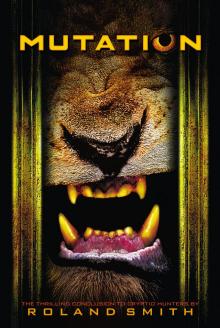 Mutation
Mutation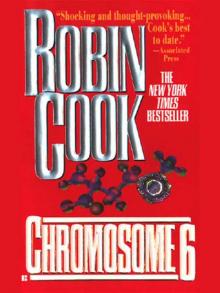 Chromosome 6
Chromosome 6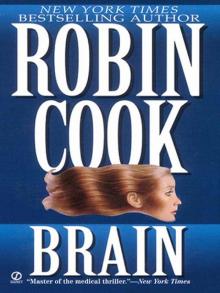 Brain
Brain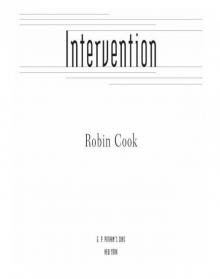 Intervention
Intervention Invasion
Invasion The Legend of Parzival: The Epic Story of His Quest for the Grail
The Legend of Parzival: The Epic Story of His Quest for the Grail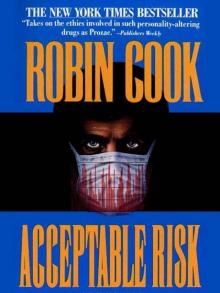 Acceptable Risk
Acceptable Risk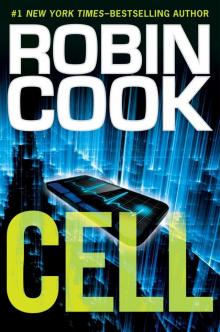 Cell
Cell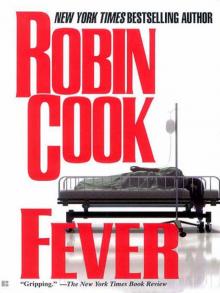 Fever
Fever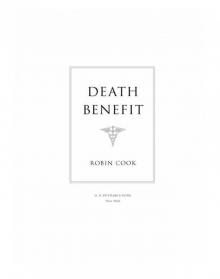 Death Benefit
Death Benefit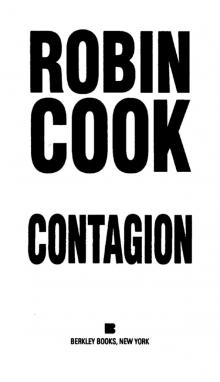 Contagion
Contagion Mindbend
Mindbend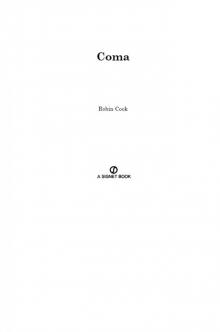 Coma
Coma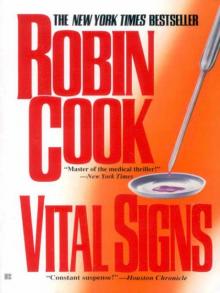 Vital Signs
Vital Signs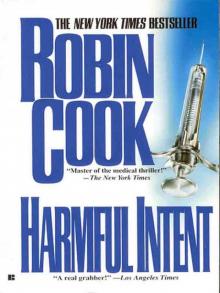 Harmful Intent
Harmful Intent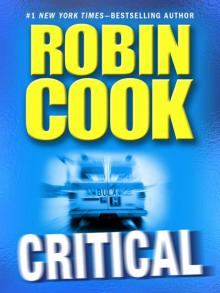 Critical
Critical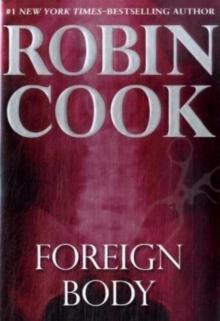 Foreign Body
Foreign Body Marker
Marker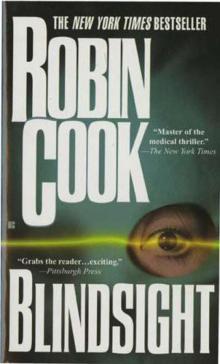 Blindsight
Blindsight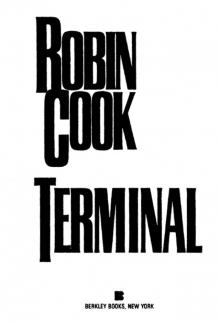 Terminal
Terminal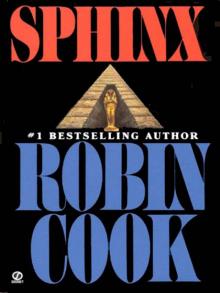 Sphinx
Sphinx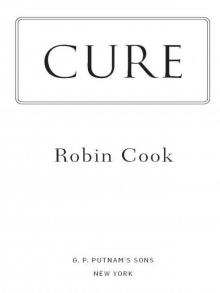 Fatal Cure
Fatal Cure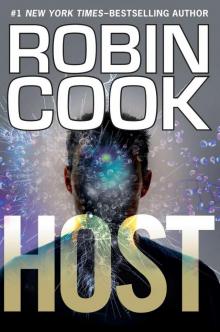 Host
Host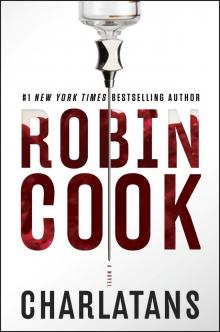 Charlatans
Charlatans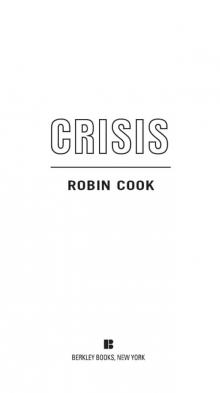 Crisis
Crisis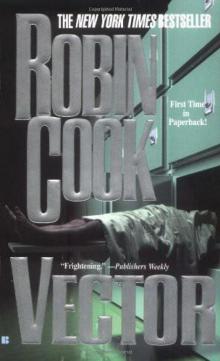 Vector
Vector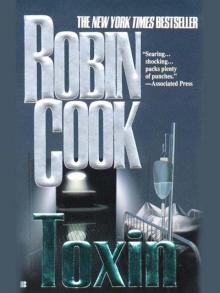 Toxin
Toxin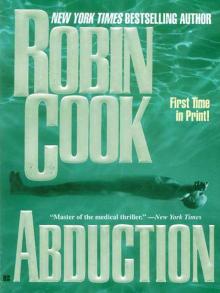 Abduction
Abduction Viral
Viral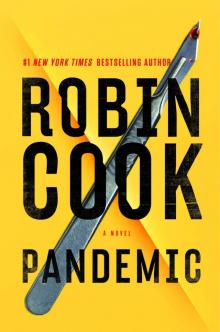 Pandemic
Pandemic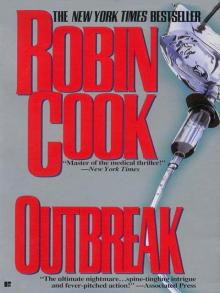 Outbreak
Outbreak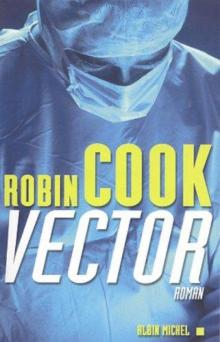 Vector js&lm-4
Vector js&lm-4 Godplayer
Godplayer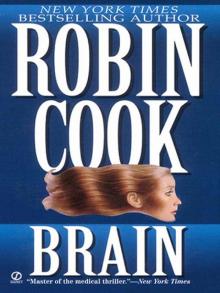 A Brain
A Brain Year of the Intern
Year of the Intern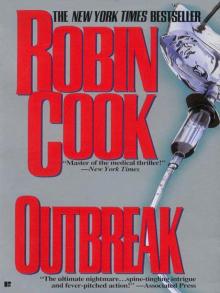 Outbreak dmb-1
Outbreak dmb-1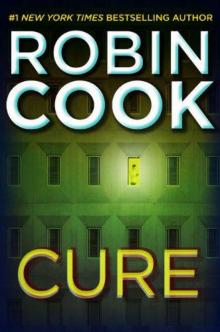 Cure
Cure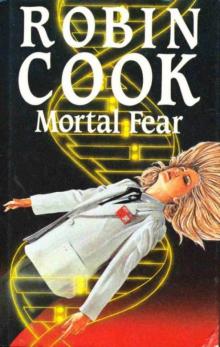 Mortal Fear
Mortal Fear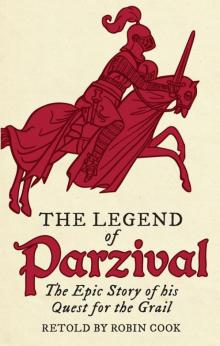 The Legend of Parzival
The Legend of Parzival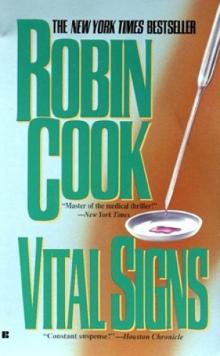 Vital Signs dmb-2
Vital Signs dmb-2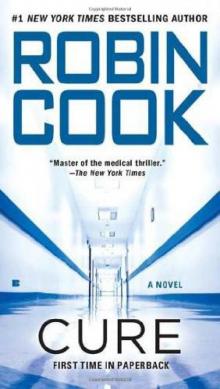 Cure (2010) sam-10
Cure (2010) sam-10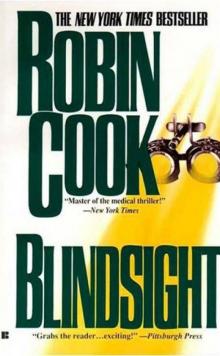 Blindsight sam-1
Blindsight sam-1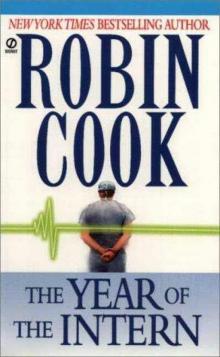 The Year of the Intern
The Year of the Intern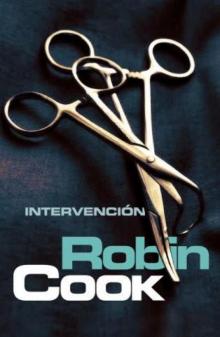 Intervention sam-9
Intervention sam-9 Foreign Body sam-8
Foreign Body sam-8